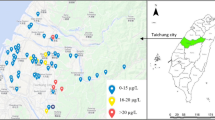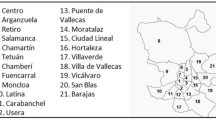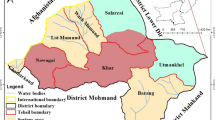Abstract
Drinking water contaminated with lead has adverse health consequences, particularly in young children. Water dispensed from point-of-use dispensers is generally regarded as drinking water instead of conventional tap water in Taiwan, and such dispensers are installed in all public facilities, including elementary schools. However, studies on drinking water quality are mainly focused on tap water, while dispenser water quality is less known. Hence, this study investigated lead concentrations in drinking water from point-of-use dispensers in elementary schools of Taichung, Taiwan. Water samples were collected between September 2019 and February 2021 from 86 schools across 24 districts utilizing a modified first draw sampling protocol to collect ten 100-mL sequential samples. Approximately 26% of the schools had at least one sample exceeding 10 μg/L (Taiwan EPA standard), with the highest level reaching 99.2 μg/L. Exceedance tendency varied with water use, seasons, and age of the schools. Samples collected over the weekends and during summer showed higher levels and frequencies of contamination. Lead levels surpassing the standard were observed in 14% of weekend and 17% of summer samples, compared to only 4% of weekday and 4% of winter samples. Similarly, while older schools (age > 40 years) exhibited higher contamination, young schools (age < 20 years) were also not entirely safe. This study reveals that point-of-use dispensers do not always provide safe drinking water. Findings also indicate the susceptibility of children in elementary schools to lead exposure through their drinking water. Therefore, a routine monitoring program for heavy metals, including lead, in drinking water is urgently needed.







Similar content being viewed by others

Data availability
Data generated during this study are included in this manuscript and its supplementary information file. Additional information on data collected and types of dispensers is provided as supplementary information.
References
Adhikari S, Lin YP, Ng DQ (2022) Influence of point-of-use dispensers on lead level assessment in drinking water of a lead pipe-free campus. npj Clean. Water 5:1–8. https://doi.org/10.1038/s41545-022-00196-9
Adhikari S, Yanuar E, Ng DQ (2021) Widespread nickel contamination in drinking water supplies of elementary schools in Taichung. Environ Sci Pollut Res, Taiwan. https://doi.org/10.1007/s11356-021-15137-1
American Public Health Association, American Water Works Association, Water Environment Federation (2017) Standard methods for the examination of water and wastewater. APHA, AWWA and WEF, Washington, DC, USA
Arnold RB, Edwards M (2012) Potential reversal and the effects offlow pattern on galvanic corrosion of lead. Environ Sci Technol 46:10941–10947. https://doi.org/10.1021/es3017396
Buajitti E, Fazio X, Lewis JA, Rosella LC (2021) Association between lead in school drinking water systems and educational outcomes in Ontario, Canada. Ann Epidemiol 55:50–56.e1. https://doi.org/10.1016/j.annepidem.2020.09.011
Canada H (2020) Guidelines for Canadian drinking water quality: guideline technical document - lead. Water and Air Quality Bureau, Healthy Environments and Consumer Safety Branch, Canada
Carter JA, Erhardt RJ, Jones BT, Donati GL (2020) Survey of lead in drinking water from schools and child care centers operating as public water suppliers in North Carolina, USA: implications for future legislation. Environ Sci Technol 54:14152–14160. https://doi.org/10.1021/acs.est.0c04316
Chang FC, Lin YP (2019) Survey of lead concentration in tap water on a university campus. Environ Sci Pollut Res 26:25275–25285. https://doi.org/10.1007/s11356-019-05771-1
Chou SY, Dewabharata A, Bayu YC et al (2022) An automatic energy saving strategy for a water dispenser based on user behavior. Adv Eng Informatics 51:101503. https://doi.org/10.1016/j.aei.2021.101503
Chowdhury S, Kabir F, Mazumder MAJ, Zahir MH (2018) Modeling lead concentration in drinking water of residential plumbing pipes and hot water tanks. Sci Total Environ 635:35–44. https://doi.org/10.1016/j.scitotenv.2018.04.065
Clark B, Masters S, Edwards M (2014) Profile sampling to characterize particulate lead risks in potable water. Environ Sci Technol 48:6836–6843. https://doi.org/10.1021/es501342j
Del Toral MA (2015) High lead levels in Flint, Michigan - interim report. WG-15J; U.S. Environmental Protection Agency Region 5. Chicago, IL. http:// flintwaterstudy.org/wp-content/uploads/2015/11/Miguels-Memo.pdf Accessed September 14, 2021
Del Toral MA, Porter A, Schock MR (2013) Detection and evaluation of elevated lead release from service lines: a field study. Environ Sci Technol 47:9300–9307. https://doi.org/10.1021/es4003636
Deshommes E, Laroche L, Nour S et al (2010) Source and occurrence of particulate lead in tap water. Water Res 44:3734–3744. https://doi.org/10.1016/j.watres.2010.04.019
Deshommes E, Prévost M, Levallois P, Lemieux F, Nour S (2013) Application of lead monitoring results to predict 0–7 year old children’s exposure at the tap. Water Res 47:2409–2420. https://doi.org/10.1016/j.watres.2013.02.010
Doré E, Deshommes E, Andrews RC, Nour S, Prévost M (2018) Sampling in schools and large institutional buildings: Implications for regulations, exposure and management of lead and copper. Water Res 140:110–122. https://doi.org/10.1016/j.watres.2018.04.045
Doré E, Formal C, Muhlen C, et al (2021) Effectiveness of point-of-use and pitcher filters at removing lead phosphate nanoparticles from drinking water. Water Res 201:0–11. https://doi.org/10.1016/j.watres.2021.117285
Gadelkareem TM, EldeinHussin AMTA, Hennes GM, El-Ehwany AA (2019) Stirling cycle for hot and cold drinking water dispenser. Int J Refrig 99:126–137. https://doi.org/10.1016/j.ijrefrig.2018.11.033
Girolamini L, Lizzadro J, Mazzotta M et al (2019) Different trends in microbial contamination between two types of microfiltered water dispensers: from risk analysis to consumer health preservation. Int J Environ Res Public Health 16. https://doi.org/10.3390/ijerph16020272
Government of Japan (2020) Environmental quality standards for water pollution. https://www.env.go.jp/en/water/wq/wp.pdf Accessed July 18, 2021
Government of Nepal (2005) National drinking water quality standards. In: Ministry of Physical Planning and Works https://dwssm.gov.np/wp-content/uploads/2019/05/NDWQS_2005_Nepal.pdf Accessed June 19, 2022
Harvey PJ, Handley HK, Taylor MP (2016) Widespread copper and lead contamination of household drinking water, New South Wales, Australia. Environ Res 151:275–285. https://doi.org/10.1016/j.envres.2016.07.041
Hashim NH, Yusop HM (2016) Drinking water quality of water vending machines in Parit Raja, Batu Pahat, Johor. IOP Conf Ser Mater Sci Eng 136:4–12. https://doi.org/10.1088/1757-899X/136/1/012053
Jarvis P, Fawell J (2021) Lead in drinking water – an ongoing public health concern? Curr Opin Environ Sci Heal 20:100239. https://doi.org/10.1016/j.coesh.2021.100239
Lambrinidou Y, Triantafyllidou S, Edwards M (2010) Failing our children: lead in U.S. school drinking water. New Solut 20:25–47. https://doi.org/10.2190/NS.022010eov
Levallois P, Barn P, Valcke M, Gauvin D, Kosatsky T (2018) Public health consequences of lead in drinking water. Curr Environ Health Rep. https://doi.org/10.1007/s40572-018-0193-0
Lobo GP, Laraway J, Gadgil AJ (2022) Identifying schools at high-risk for elevated lead in drinking water using only publicly available data. Sci Total Environ 803:150046. https://doi.org/10.1016/j.scitotenv.2021.150046
Lu W, Levin R, Schwartz J (2022) Lead contamination of public drinking water and academic achievements among children in Massachusetts: a panel study. BMC Public Health 22:107. https://doi.org/10.1186/s12889-021-12474-1
Lytle DA, Formal C, Cahalan K et al (2021) The impact of sampling approach and daily water usage on lead levels measured at the tap. Water Res 197:117071. https://doi.org/10.1016/j.watres.2021.117071
Lytle DA, Schock MR, Formal C et al (2020) Lead particle size fractionation and identification in Newark, New Jersey’s drinking water. Environ Sci Technol 54:13672–13679. https://doi.org/10.1021/acs.est.0c03797
Mantha A, Tang M, Pieper KJ et al (2020) Tracking reduction of water lead levels in two homes during the Flint Federal Emergency. Water Res X 7:100047. https://doi.org/10.1016/j.wroa.2020.100047
Ministry of Health Malaysia (2004) National standard for drinking water quality. Engineering Services Division. http://extwprlegs1.fao.org/docs/pdf/mal189903.pdf Accessed August 26, 2022
Nasseh N, Nasseh I, Khodadadi M, Bierami A, Kamranifar M (2017) The removal of lead from aqueous solution using almond green hull (Prunus amygdalus-Fascionello) waste material magnetized with Fe3O4. Ann Mil Health Sci Res 15:e66336. https://doi.org/10.5812/amh.66336
Ng DQ, Lin YP (2016) Evaluation of lead release in a simulated lead-free premise plumbing system using a sequential sampling approach. Int J Environ Res Public Health 13:1–15. https://doi.org/10.3390/ijerph13030266
Ng DQ, Liu SW, Lin YP (2018) Lead as a legendary pollutant with emerging concern: survey of lead in tap water in an old campus building using four sampling methods. Sci Total Environ 636:1510–1516. https://doi.org/10.1016/j.scitotenv.2018.04.402
Pan W, Pan C, Bae Y, Giammar D (2019) Role of manganese in accelerating the oxidation of Pb(II) carbonate solids to Pb(IV) oxide at drinking water conditions. Environ Sci Technol 53:6699–6707. https://doi.org/10.1021/acs.est.8b07356
Pieper KJ, Krometis LA, Gallagher D et al (2015) Profiling private water systems to identify patterns of waterborne lead exposure. Environ Sci Technol 49:12697–12704. https://doi.org/10.1021/acs.est.5b03174
Redmon JH, Levine KE, Aceituno AM et al (2020) Lead in drinking water at North Carolina childcare centers: Piloting a citizen science-based testing strategy. Environ Res 183:109126. https://doi.org/10.1016/j.envres.2020.109126
Riblet C, Deshommes E, Laroche L, Prévost M (2019) True exposure to lead at the tap: insights from proportional sampling, regulated sampling and water use monitoring. Water Res 156:327–336. https://doi.org/10.1016/j.watres.2019.03.005
Roy S, Edwards MA (2019) Preventing another lead (Pb) in drinking water crisis: lessons from the Washington D.C. and Flint MI contamination events. Curr Opin Environ Sci Heal 7:34–44. https://doi.org/10.1016/j.coesh.2018.10.002
Salehi M, Odimayomi T, Ra K et al (2020) An investigation of spatial and temporal drinking water quality variation in green residential plumbing. Build Environ 169:106566. https://doi.org/10.1016/j.buildenv.2019.106566
Shadbegian R, Guignet D, Klemick H, Bui L (2019) Early childhood lead exposure and the persistence of educational consequences into adolescence. Environ Res 178:108643. https://doi.org/10.1016/j.envres.2019.108643
Stanbrough E, McCormick L, Barrett J, Barnett MO (2021) A critical opportunity: detecting and reducing lead in drinking water at child care facilities. Environ Res 112140. https://doi.org/10.1016/j.envres.2021.112140
Taiwan Environmental Protection Administration (2022) Drinking water quality standards. Laws and regulations database of the Republic of China (Taiwan). Retrieved from https://law.moj.gov.tw/ENG/LawClass/LawAll.aspx?pcode=O0040019
Triantafyllidou S, Burkhardt J, Tully J et al (2021) Variability and sampling of lead (Pb) in drinking water: Assessing potential human exposure depends on the sampling protocol. Environ Int 146:106259. https://doi.org/10.1016/j.envint.2020.106259
Triantafyllidou S, Gallagher D, Edwards M (2014) Assessing risk with increasingly stringent public health goals: The case of water lead and blood lead in children. J Water Health 12:57–68. https://doi.org/10.2166/wh.2013.067
Triantafyllidou S, Schock MR, Desantis MK, White C (2015) Low contribution of PbO2-coated lead service lines to water lead contamination at the tap. Environ Sci Technol 49:3746–3754. https://doi.org/10.1021/es505886h
United States Environmental Protection Agency (2012) 2012 edition of the drinking water standards and health advisories. EPA 822-S-12-001. Office of Water, U.S. Environmental Protection Agency, Washington, DC. https://www.epa.gov/sites/production/files/201509/documents/dwstandards2012.pdf. Accessed 21 Feb 2022
United States Federal Register (2021) National primary drinking water regulations: lead and copper rule revisions. https://www.federalregister.gov/documents/2021/01/15/2020-28691/national-primary-drinking-water-regulations-lead-and-copper-rule-revisions. Accessed 10 Jul 2022
World Health Organization (1996) International programme on chemical safety. Guidelines for drinking-water quality, vol. 2. Health criteria and other supporting information, 2nd edn, Geneva
World Health Organization (2017) Guidelines for drinking-water quality, 4th edition incorporating the first addendum, Geneva
Funding
The authors would like to acknowledge the Ministry of Science and Technology of Taiwan for funding this research under grant nos. MOST 107-2221-E-324-002-MY2 and MOST-109-2221-E-324-009-MY3.
Author information
Authors and Affiliations
Corresponding author
Ethics declarations
Ethics approval and consent to participate
This is not applicable.
Consent for publication
This is not applicable
Competing interests
The authors declare no competing interests.
Additional information
Responsible Editor: Xianliang Yi
Publisher’s note
Springer Nature remains neutral with regard to jurisdictional claims in published maps and institutional affiliations.
Supplementary information
ESM 1
(DOCX 1041 kb)
Rights and permissions
Springer Nature or its licensor (e.g. a society or other partner) holds exclusive rights to this article under a publishing agreement with the author(s) or other rightsholder(s); author self-archiving of the accepted manuscript version of this article is solely governed by the terms of such publishing agreement and applicable law.
About this article
Cite this article
Adhikari, S., Lu, HJ. & Ng, DQ. Lead levels in drinking water from point-of-use dispensers: a case study of elementary schools in Taichung, Taiwan. Environ Sci Pollut Res 30, 86846–86855 (2023). https://doi.org/10.1007/s11356-023-28475-z
Received:
Accepted:
Published:
Issue Date:
DOI: https://doi.org/10.1007/s11356-023-28475-z



